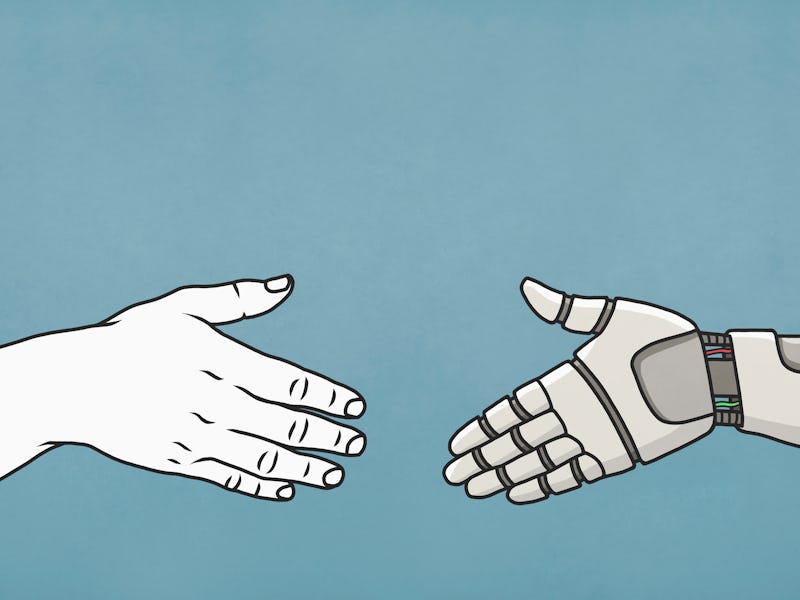Scientist warns a new sci-fi novel challenges how we think about robots
Novel Little Eyes is earning critical acclaim. But a roboticist says the book reveals the dire consequences of bugs in the system.

Imagine it: The hottest new piece of technology is flying off the shelves, and people can’t stop playing with it. Then, soon enough, it starts to have horrible repercussions for users.
It’s a story that has played out countless times, both in real life and fiction.
Robin Murphy, director of the Humanitarian Robotics and AI Laboratory at Texas A&M, found such an intersection between reality and fiction in a new novel, Little Eyes, written by Samanta Schweblin. Understanding that intersection could dramatically improve how modern roboticists build telemedicine systems, she argues — systems that are becoming critical in the coronavirus pandemic.
Little Eyes centers on a new piece of technology, a global fad called a 'kentucki.' An intoxicating mash-up of a furby and ChatRoulette, kentuckies are tiny dolls on wheels equipped with cameras that stream to a tablet. One person owns the doll, while another watches on the tablet.
The toys can move around of their own accord, and the tablets can translate whatever is being recorded into different languages for the user. The pairing can never be separated. But direct interaction between the two users is impossible.
The cover of Little Eyes, the new book from Samanta Schweblin
Schweblin uses the kentucki to take readers on a number of user journeys. Some are hopeful and others are downright terrifying. Kentuckies are used for everything from blackmail, to forging a new personal identity. For roboticist Murphy, kentuckies are powerfully reminiscent of the modern world.
“The book is so accurate that I'm halfway through it, I was going, ‘Oh dear God please don't let somebody be actually doing this,’” she tells Inverse.
In an article published Wednesday in the journal Science Robotics, Murphy further details what modern technologists can learn from Schweblin’s novel.
“Science fiction gives us some really great case studies,” she says.
Robots are intertwined with science fiction: The word ‘robot’ comes from a 1920 play, and there are countless moments in literature and film where mechanical beings have stood-in for human desires.
Murphy focuses on how robots can work with humans against disaster and disease. The uses are myriad, Murphy tells Inverse. She and her colleagues found over 260 different uses for robots in fighting disease. But there are problems roboticists need to overcome before we turn to machines for help.
A small drone that was part of a study from Murphy and her team at CRASAR.
Reading Little Eyes, she saw clear comparisons between robots used in medicine now, and kentuckies.
“We see a lot of ethical concerns," she says. Telemedicine robots can keep bumping into patients' beds, for example, she tells Inverse. “It's like every generation of roboticists has to rediscover that users just can't use a single camera to see the world in a teleoperated robot and not hit anything,” she says.
Embedded within Little Eyes's kentuckies are lessons that every roboticist should take to heart, she says.
“The drama and suspense should be even more disturbing to us as roboticists, as we have access to 20 years of human-robot interaction research capturing how people misunderstand and misuse robots,” she writes.
One of the greatest challenges roboticists and engineers face is not “focusing on one thing that makes their product special and forgetting that it's a complete system,” she says. Neither robots nor social media exist in a vacuum — they exist amidst people, in all of their messy contradictions.
Technology needs to account for how people actually function in the real world, Murphy says. To do otherwise may lead to a dystopian future reminiscent of Little Eyes, where abusive crimes can be covered up in the name of user privacy, she says.
“Roboticists tend to cut corners to get things done fast. I think that’s part of the start-up culture: you want to grab market share, it’s okay to be buggy as long as you keep things going," she says.
As humans begin to rely on robots and machines more and more for critical functions like healthcare, weeding out those bugs may become a matter of life and death.
"You’re basically beta testing with real users, hoping it’s all going to work out, and it doesn’t work so well," she adds.
This article was originally published on